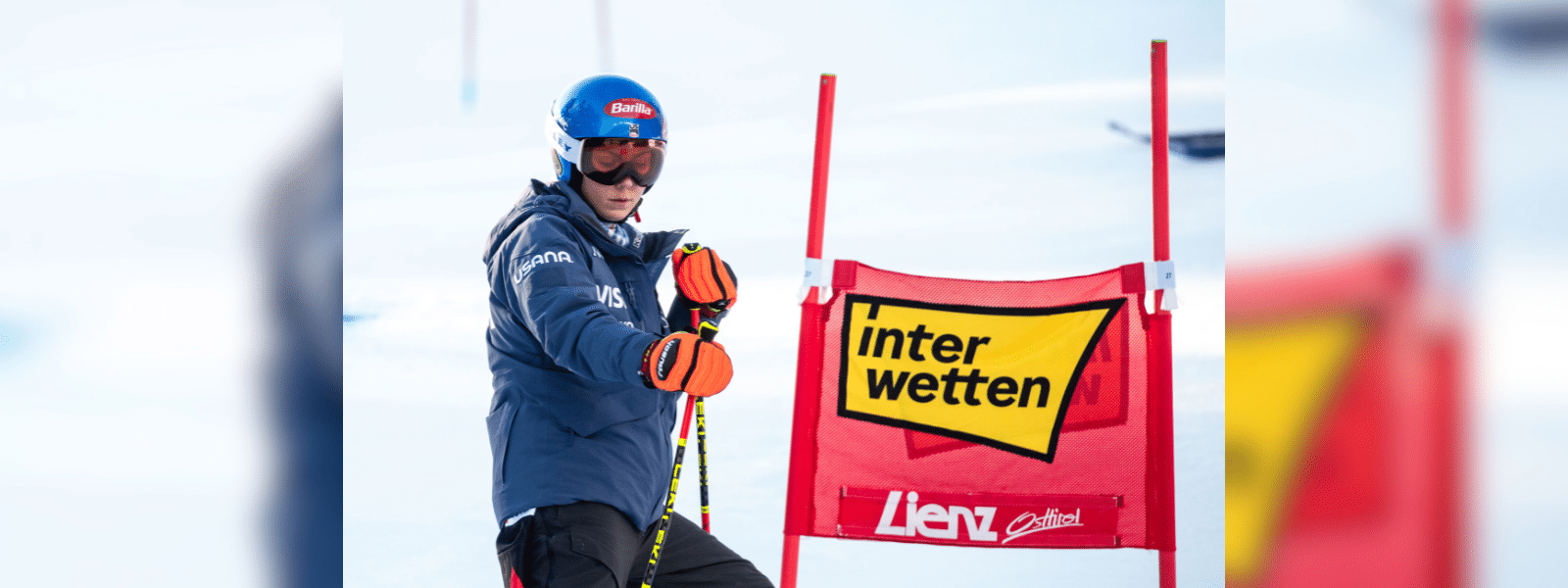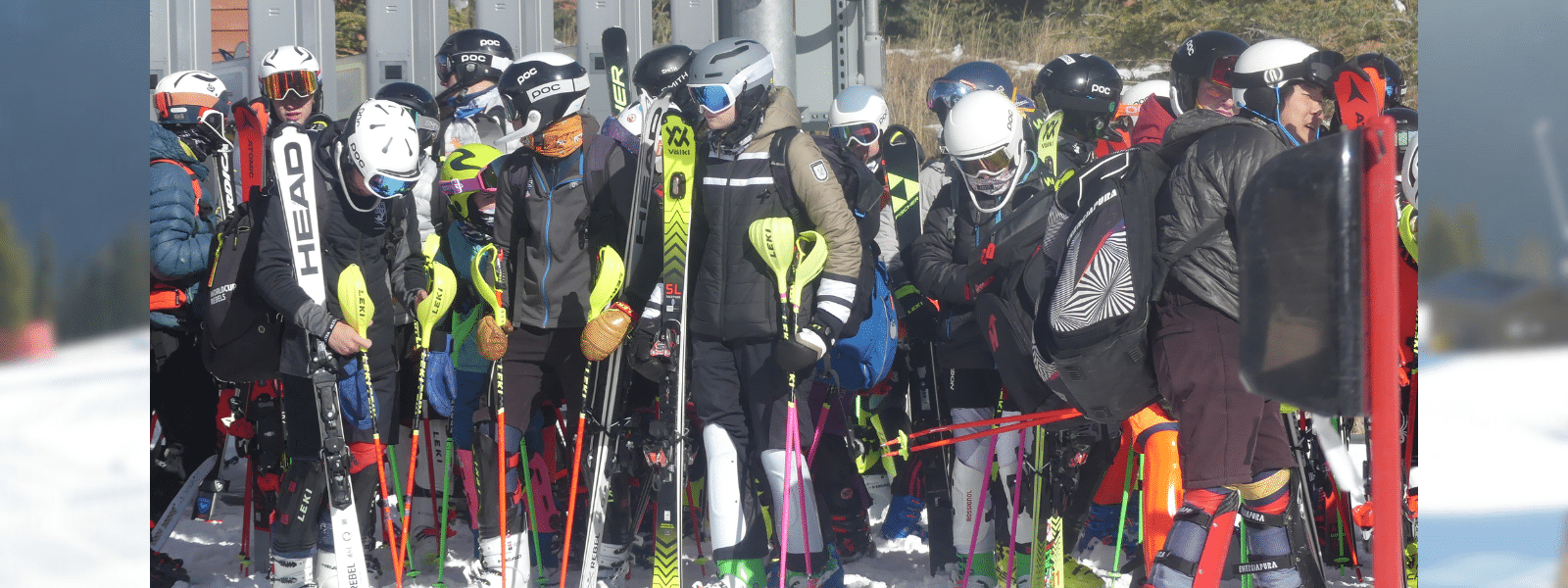The Trials and Triumphs of a PG Year
For every serious ski racer who has aspirations to ski in college or get named to a national team, a PG (post-graduate), or gap, year is almost an inevitable these days. PG years have been around for decades; they were common even back in my day when I took two PG years between graduating from Burke at 17 and entering Middlebury. With the relatively recent changes to FIS age groups, most racers these days have only two years of FIS racing under their belts by the time they graduate from high school. Even more challenging is that, assuming racers apply to colleges in the fall of their senior year, they only have one year to build a FIS profile that might be attractive to a college coach or the attention of a national team (unless your name is Mikaela Shiffrin, few American ski racers climb very high in the U.S. Ski Team food chain and have a clear path to the World Cup by the time they graduate from high school).
These challenges are exacerbated by the extreme competitiveness in being recruited and skiing for a top NCAA skiing school. It’s tough enough these days making the teams at Dartmouth, Middlebury, and other schools that don’t offer athletic scholarships and have very high admissions standards. The difficulty increases exponentially when trying to ski for a “University of…” because of the influx of older and more experienced foreign athletes, many of whom were, are still on, or will later be named to their home country’s national team. Racers like David Ketterer (Colorado), Kristine Haugen (Denver), and Jonathan Nordbotten (Vermont) come to mind.
There are several benefits that racers gain from a PG year. They have another year to get physically stronger, thus enabling them to better compete against older athletes in college or on the FIS circuit. PG racers can raise the level of their technical and tactical skiing by getting more miles under their belts. They also have the opportunity to mature mentally and become more capable of handling the psychological and emotional challenges of higher-level ski racers. The ultimate goal, of course, is that the extra year will enable them to ski that much faster which, again, will hopefully lead to a spot on a college team or a national team selection.
Which leads me to the focus of this article. Every year around this time, the same thing happens. I get a call from a parent of a PG ski racer who is struggling mentally. The clock is ticking on this all-important season and time is running out for them to achieve their goals and make some difficult decisions about their futures as ski racers. These trials and tribulations are exemplified by two PG racers I’m working with, despite the fact that both have already been accepted to prestigious colleges and universities (which should, in theory, take the pressure off).
You’d think that a PG year would be a godsend for ski racers. Without the responsibilities, stressors, and distractions of school, they would finally be able to devote their undivided attention and energy to their skiing.
But there is a dark side to being a PG racer. The fact is that a PG year is a risk. It’s no longer about having a great experience and developing important life skills in high school. Instead, PG-ers are usually looking for a very specific ROI (return on investment), typically, improved results and points for college or national team. And the unfortunate reality is that not every PG racer sees that ROI.
As a result of this shift in focus and goals, many PG-ers struggle in their gap year. Some of the challenges that PG racers face include:
- Putting all of their “eggs in one basket,” they are putting their “lives” (psychological and emotional, self-identity, self-esteem, and futures, not physical) on the line every time they slide into the starting gate,
- Having a greater awareness of the costs, in time, energy, and money, that are committed to their ski racing alone rather than their education, which somehow seems less worthwhile. If families are stretched financially by the PG year, racers can feel both pressure to achieve that ROI and guilt if they don’t (even when their parents are 100% behind them).
- Both of the above can cause PG-ers to place high expectations on themselves which results in pressure (“I HAVE TO do well this year!”) that actually prevents them from skiing their fastest.
- This pressure also creates the worry that, if PG racers don’t achieve their ROI, their gap year will have been a waste of time and money.
- For some PG-ers, additional pressure comes from the belief that the gap year is a “make or break” year that will determine their ski racing and educational futures.
- Though school can be a distraction from racers’ efforts, that doesn’t mean it’s a bad distraction. To the contrary, school and the social life of which it is a part can be healthy distractions that give racers a mental, emotional, and physical break from the intensity of ski racing. It can also offer some life balance in which their eggs aren’t all in one basket which means ski racing will feel less like life or death.
Given these challenges that PG racers face, the obvious question is: How can PG-ers lift this cumbersome weight off of their shoulders?
First, this shift in attitude begins with a powerful realization: A PG year is a gift and an opportunity. A gift because, in the grand scheme of things, ski racing isn’t that important, so when parents support a gap year with encouragement and money, they are saying (at least in most cases), “We love you. We support you. Go after your dreams!” An opportunity because there is real value for ski racers to focus their entire self to chasing that dream (if approached in the right way), whether it is to ski in college or being named to a national team.
Second, for PG-ers to have a chance of a successful gap year in their racing, they must approach it with a healthy perspective. Yes, they are investing themselves completely in their ski racing. At the same time, given their demographic, even if things don’t work out as planned, they will be okay. They will go to college, find a career, and perhaps get married and have kids. In other words, whatever dire outcome they believe will happen if their gap year doesn’t work out, is very likely not grounded in reality. This realization alone helps to lift some of that weight off of their shoulders.
Third, even with the PG-ers I work with directly, I can’t just expunge their concern about results. They are competitive athletes in a competitive sport in a competitive culture. Plus, they have big goals and dreams. So, instead of telling them to just stop thinking about results (that’s like telling them to push against a pink elephant in the hopes of moving it; it ain’t gonna happen!). Instead, I tell them to acknowledge and accept the pink elephant and then have them ask themselves a simple question: “What do I need to do to achieve the results I want?” This shift involves a move away from an outcome focus that creates expectations, doubt, worry, and pressure (all ingredients that will not make for a good recipe for success). And it means a move to a process focus in which PG-ers direct their attention and energy to what will enable them to ski fast, whether technique, tactics, fitness, equipment, or, of course, the mind. Unlike an outcome focus, a process focus is motivating, confidence building, inspiring, and fun. It also involves their being deeply committed to their process goals and ensuring that they are setting themselves up for success by being totally prepared in training and for races.
Fourth, at a practical level, though the single-minded devotion that a gap year offers can help PG racers raise their games. At the same time, if that focus becomes too narrow, what will likely happen is exactly what I described above. So PG-ers should make an effort to have some semblance of a life outside of ski racing: take an online course, read books, listen to music, stay in touch with friends, play a musical instrument, whatever keeps your mind active, offers you challenges and fulfillment separate from their ski racing, and provides some healthy “psychological detachment” (apologies for the psych-speak) from the otherwise 24/7 absorption in all things ski racing.
Fifth, PG racers should go back to basics. They should remind themselves why they took a gap year. Sure, the ROI was part of the calculus, but the real reason is about passion, determination, and dreams. If they focus on that, they have a much better chance of realizing their desired ROI.
Sixth, PG-ers who are struggling should recall Albert Einstein’s Law of Insanity: Doing the same things over and over and expecting different results. If they’re not on the right road, they need to get on a different road which means adopting some of the approaches and practices I described above.
In the end, no matter how the season turns out for PG racers, life will go on quite successfully, in all likelihood. In other words, aside from some potential disappointment from a worst-case scenario in their skiing during their gap year, they really have nothing to lose. What this means is that when they get into the starting gate, they can tell themselves, “I’m living the dream! F&%# it!, I’m just going pedal to the medal” (pun intended).
The ironic thing about this entire discussion is that when PG-ers let go of the crap filling their brains with doubt, worry, expectations, and pressure, and just focus on their love of our sport and going as fast as they possibly can, they’re more likely to achieve the ROI they are looking for. Even if they don’t, they will still look back on their gap year with pride and a sense of triumph at having left it all on the course. And, in a decade or two when they’re living a “normal” life, PG-ers will likely look back on their gap year and think to themselves, “What an amazing time I had!” Now that is an ROI that we can all feel good about.
It’s not too late in the season to get your mind dialed in. Check out my Prime Ski Racing online mental training courses.





















